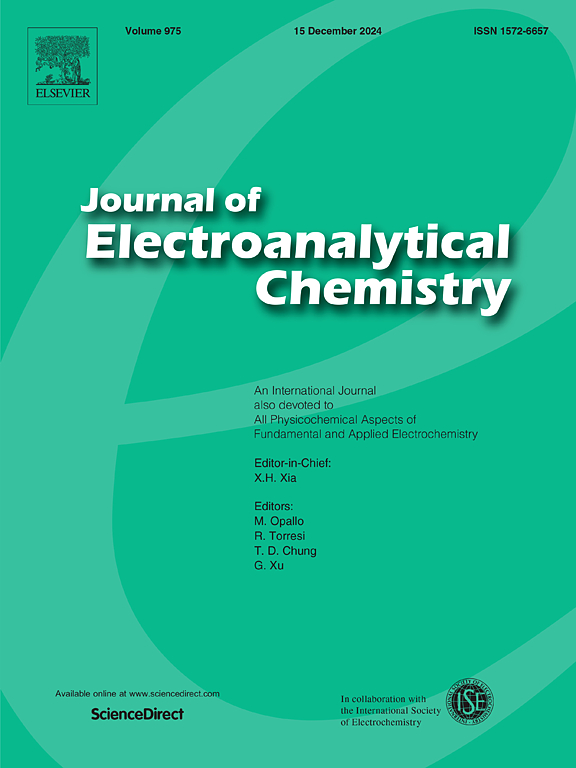A 3D coral-like Co3O4@CoMoO4 for high-performance supercapacitors with superior energy density and cycling stability
IF 4.1
3区 化学
Q1 CHEMISTRY, ANALYTICAL
引用次数: 0
Abstract
In this study, the 3D coral-like layered structure of Co3O4@CoMoO4, synthesized by the hydrothermal method, plays a crucial role in its excellent electrochemical properties. This 3D coral-like structure, enriched with oxygen vacancies, mesopores, and defect sites, enables efficient charge storage by shortening the ion/electron transport path and exposing the active sites. The unique coral-like structure between Co3O4 and CoMoO4 enhances the electron conductivity and stabilizes the interfacial redox reactions. In particular, the specific capacitance of the Co3O4@CoMoO4 electrode was found to be as high as 2370.8 F g−1 at 1 A g−1. The prepared Co3O4@CoMoO4//AC exhibited an energy density of 43.75 W h kg−1 at a power density of 700 W kg−1. Furthermore, the specific capacitance retention of Co3O4@CoMoO4//AC was maintained at 92.19 % after 5000 cycles at 3 A g−1. This work demonstrates a viable strategy to overcome the inherent limitations of transition metal oxides, which has potential for application in high-power, long-life energy storage systems.

3D珊瑚状Co3O4@CoMoO4,用于高性能超级电容器,具有优越的能量密度和循环稳定性
在本研究中,通过水热法合成的三维珊瑚状层状结构Co3O4@CoMoO4对其优异的电化学性能起着至关重要的作用。这种三维珊瑚状结构富含氧空位、介孔和缺陷位点,通过缩短离子/电子传递路径和暴露活性位点,实现有效的电荷存储。Co3O4和CoMoO4之间独特的珊瑚状结构增强了电子导电性,稳定了界面氧化还原反应。特别是,Co3O4@CoMoO4电极在1ag−1时的比电容高达2370.8 F g−1。在功率密度为700 W kg−1时,所制备的Co3O4@CoMoO4//交流电的能量密度为43.75 W h kg−1。此外,在3 A g−1下,Co3O4@CoMoO4//AC在5000次循环后的比电容保持率保持在92.19%。这项工作展示了一种可行的策略来克服过渡金属氧化物的固有局限性,这在高功率、长寿命的储能系统中具有应用潜力。
本文章由计算机程序翻译,如有差异,请以英文原文为准。
求助全文
约1分钟内获得全文
求助全文
来源期刊
CiteScore
7.80
自引率
6.70%
发文量
912
审稿时长
2.4 months
期刊介绍:
The Journal of Electroanalytical Chemistry is the foremost international journal devoted to the interdisciplinary subject of electrochemistry in all its aspects, theoretical as well as applied.
Electrochemistry is a wide ranging area that is in a state of continuous evolution. Rather than compiling a long list of topics covered by the Journal, the editors would like to draw particular attention to the key issues of novelty, topicality and quality. Papers should present new and interesting electrochemical science in a way that is accessible to the reader. The presentation and discussion should be at a level that is consistent with the international status of the Journal. Reports describing the application of well-established techniques to problems that are essentially technical will not be accepted. Similarly, papers that report observations but fail to provide adequate interpretation will be rejected by the Editors. Papers dealing with technical electrochemistry should be submitted to other specialist journals unless the authors can show that their work provides substantially new insights into electrochemical processes.

 求助内容:
求助内容: 应助结果提醒方式:
应助结果提醒方式:


